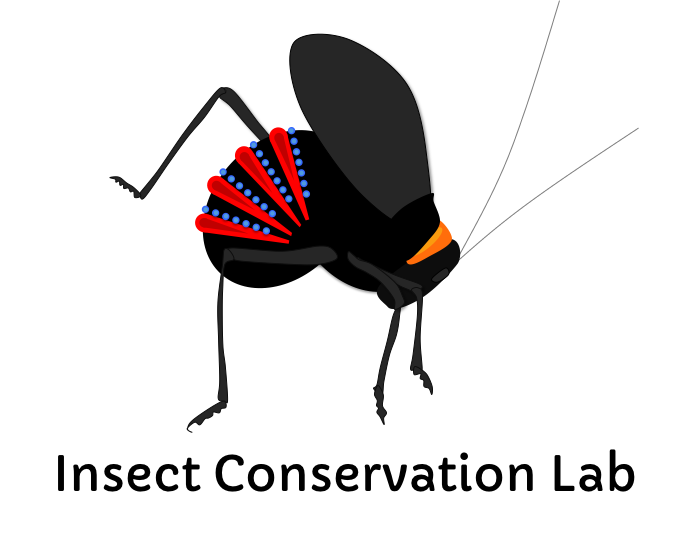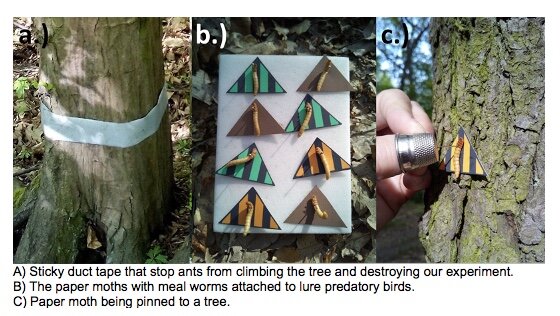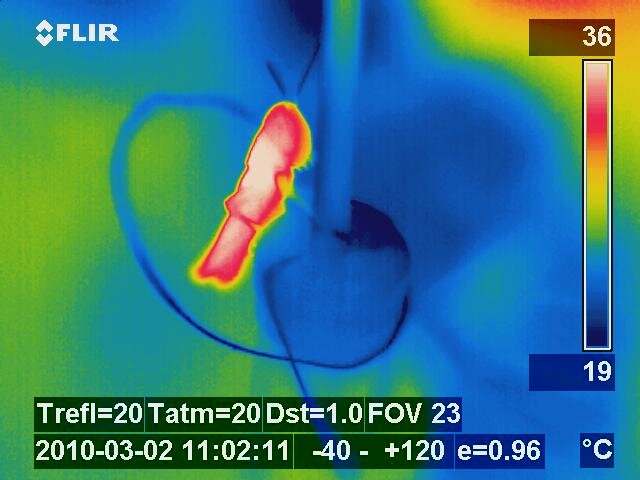Projects
Bogong moth, Agrotis infusa (Photo: Ajay Narendra)
The plight of the Bogong moth: a model for conservation in Australia
This project aims to direct conservation actions for the bogong moth, an endangered species of profound cultural, ecological, and economic importance to Australians. Although iconic and famous for their epic migration to the Australian Alps, the bogong moth's distribution and flyways are unknown making conservation actions impossible. This project expects to forge the key partnerships and harness public enthusiasm to generate the data needed for conservation actions via a National Bogong Moth Observatory. The expected outcomes of this project are enhanced capacity to identify and mitigate threats to bogong moths. This should provide significant benefits such as a highly transferable model for continent-wide conservation in Australia.
Norfolk Island (wikicommons)
Conservation of Island Invertebrates - a Norfolk Island snails case study
Partnership between Australian Museum, Taronga Zoo, Senversa, Norfolk Island Regional Council, Department of Infrastructure, Transport, Regional Development, Communications and the Arts
This project aims to deliver an exemplar industry network model for conservation on Australia’s islands which are hotspots both of biodiversity and of extinctions. Protecting species on islands is therefore key to securing Australia’s biodiversity. We will secure Norfolk Island's 60 species of land snails via in situ and ex situ conservation with six key industry partners. The project expects to unite conservation actions across research, governments, and industry. Expected outcomes of this project include Norfolk Island emerging as a leader in global conservation. This should provide significant benefits such as a model for conservation that is applicable to thousands of isolated, range-restricted invertebrate species across Australia.
You can buy eggpicnic’s version of Kosciuscola tristis here: https://eggpicnic.com/product/thermocolour-grasshopper/ (Photo: Kate Umbers)
Friends in High Places
Partnership between Eggpicnic and us!
Eggpicnic (www.eggpicnic.com) is a Sydney-based duo of artists that specialise in drawing attention to threatened species and ecosystems with the goal of reducing the risk of extinction through education. They depict species in their distinctive style using simple lines and shapes and use many different platforms for display. In this project we will create a series of art works that will be for sale and used in a public installation. We will collect data on the motivation of customers purchasing prints online and we will collect data on people’s attitudes toward the species and conservation more generally upon experiencing the public installation.
Crypsis vs aposematism: which strategy works better where?
A Global Antipredator Colouration Network is taking a world-wide approach to asking the old question: Why are some bugs colourful and others camouflaged? This project, Led by Will Allen (University of Swansea, UK) and Iliana Medina (University of Melbourne, Australia) includes researchers from 25 countries spread across all continents (except Antarctica) and will provide deep insights into this problem. It includes some heavy-duty field work!
Mountain katydid Photo Michael R Brightwood
Startle displays: a new route to resolving the aposematism paradox
ARC DECRA Fellowship 2018 - 2023 (with research breaks)
Warning colours should prevent prey from being attacked, so how come mountain katydids are cryptic before they are attacked and only reveal their colours afterwards? We are using behavioural assays, spectrophotometry, toxicology, field-based predation trials and mechanical models to try and explain this paradoxical display.
Related: here’s fun look at eyespots in Australian insects!
Curiosity Show on youtube: https://www.youtube.com/watch?v=KJBZ8th8Fgs
(Photo Emily Burdfield-Steel)
Harlequin hibscus bugs Photo: Emily Burdfeild-Steel
Tracking warning signals across a variable landscape
ARC Discovery project 2019 - 2021
Team: Marie Herberstein Macquarie University, Nathan Hart Mcquarie University, Hannah Rowland Max Planck Institute, Johanna Mappes University of Jyväskylä.
This project aims to investigate how local environmental factors and predator communities affect warning colour expression across the Australian landscape. Warning colours protect toxic prey from predators who learn to associate the colours with an unpleasant taste. Theoretically, warning colours should not vary, but in nature we find appreciable and unexplained variation. This project will utilise Australia's excellent environmental and biodiversity informatics infrastructure to inform the public and decision makers about the adaptability of animals to environmental change such as predator loss.
Drawing: James O’Hanlon
The evolution of startle displays: a case study in praying mantises
Collaborators: Marta Vidal-Garcia University of Calgary, James O'Hanlon University of New England, Gavin Svenson Cleveland Museum of Natural History.
Among the most impressive of defensive displays are those of the praying mantises. These stealthy predators are veracious hunters, but are also palatable prey for many predators. Mantises are not toxic and many rely on camouflage as a primary defence but once detected some can change their posture to reveal conspicuous colour patterns. We are reconstructing the evolutionary history of deimatic displays in praying mantises to gain insights into their evolution.
Blotched blue tongue from the high country (Photo Kate Umbers)
Life-saving tongues: Do blue tongues tongues save their lives?
Collaborators: Martin Whiting, Sergio Naretto, William Bailes, and David Inglis, Macquarie University.
We are entering the wonderful world of the Tiliqua skinks with a project on the protective value of their colourful tongue displays. Naturally this project involves some robotics and some kookaburras. One thing's for sure, we will be working flat out, like a lizard drinking.
Three male Kosciuscola tristis males fighting over a female. Photo by Kate Umbers
Two male Kosciuscola tristis fighting over an egg-laying female (Photo: Kate Umbers)
The adaptive significance of fighting in male grasshoppers
Led by: Giselle Muschett, Collaborators: Chrissie Painting, University of Waikato, Marie Herberstein, Macquarie University
Male Kosciuscola grasshoppers fight over ovipositing females! This is exciting because before this was discovered in Kosciuscola, grasshoppers were known for avoiding conflict. For her PhD, Giselle conducted a series of experiments to try to get at what was driving these fights, by conducting an outrageous number of behavioural trials. We are crunching the data.
Rachel and Kate (+ bub) hosting the alpine animals expert elicitation workshop (Photo: Nola Umbers)
Assessing the risk of species extinction in the Australian Alps
Led by: Adrienne Nicotra, John Morgan, Anca Hanea, Sonya Geange, James Camac, Kate Umbers and Rachel Slatyer
We applied the IDEA Expert Elicitation protocol to quantify Australian mountain plant and animal risk to extinction in the next 25 years.
Thredbo River (Photo: Kate Umbers)
Assessing the Australian Alps for IUCN listing
Led by Tracey Regan, Arthur Rylah Institute
A large team is currently assessing the Australian Alps for the IUCN Red List of Ecosystems.
Bell, NSW, six months after the 2020 megafires (Photo: Kate Umbers)
Bush fire impact on Invertebrates
Collaborators: Jess Marsh, Payal Bal, John Woinasrski, Libby Rumpff, Tanya Latty, Manu Saunders, Lizzy Lowe, Ainsley Seago, Lindsey Frost, Juanita Rodriguez, Brian Lessard, James Bickerstaff, Thomas White, Phil Barton.
Reviewing data on how Australian invertebrate species respond to fire and how the 2019-2020 megafires impacted all Australia’s invertebrates!
Two katydids found on Mt Buller showing colour variation (Photo: Kate Umbers)
Conservation genomics and speciation across the Great Dividing Range in mountain katydids (Acripeza reticulata)
Collaborators: James Bickerstaff CSIRO, Renee Catullo, University of Western Australia
Mountain katydids are a charismatic species of Australian orthopteran found across the high-country and from time-to-time in some lowlands across the entire east coast of Australia. This monotypic genus has a fragmented distribution from Cairns to Hobart and has never been taxonomically or genetically revised to determine whether it harbours several cryptic species.
A thermal image of a male Kosciuscola tristis (Photo: Kate Umbers)
Physiological colour change in the chameleon grasshopper
Collaborators: Marie Herberstein, Macquarie University, Rachel Slatyer, Dept Ag and Water, Aust Govt.
The Kociuscola grasshoppers are endemic to the Australian alpine region and we are targeting them to assess their ability to adapt to climate change. We are taking a three-pronged approach, integrating landscape genomics, physiology and behaviour. Why on earth does the chameleon grasshopper (Kosciuscola tristis) change colour with temperature? When its body temperature exceeds 25°C, males turn bright blue; when they are cold (<10°C) they become black. What are the physiological mechanisms that allow this change? and what is its function for the grasshopper? Someone needs to find out.
snow melt above Thredbo. (Photo: Kate Umbers)
Overwintering in skyhoppers - how will the eggs cope with unreliable snow cover?
The skyhoppers of the Australian Alps have a single generation each year with the adults dying out with the cold weather in early winter. Eggs are laid in Autumn when females deposit them into the soil and stay tucked under a thick snowy blanket until Spring. As climate change progresses quickly in the region the depth and duration of snow is predicted to vary and on average decrease substantially. Without a think insulating snow pack regulating the soil temperature, skyhopper eggs are likely to be exposed to severe cold in the coldest months and increase warmth early in spring. We are interested in trying to understand how vulnerable skyhopper eggs are to fluctuations in snow cover.
Grasshoppers from two populations of Kosciuscola tristis. (Photos: Nikolai Tatarnic)
Speciation in the mountains: phylogenomics of the alpine grasshopper genus Kosciuscola
Collaborators: Rachel Slatyer University of Wisconsin, Nikolai Tatarnic Western Australian Museum and Hojun Song, Texas A&M
Funded by the Hermon Slade Foundation, we are collaborating with Rachel Slatyer and Hojun Song on a project led by Nikolai Tatarnic, on the population genomics of Kosciuscola across their montane range. For more information you can visit our project's Hermon Slade website here.
Educating the enemy: Harnessing learned avoidance behavior in wild predators to increase survival of reintroduced southern corroboree frogs
A Southern Corroboree frog and attacked frog models used in our experiments (Photos: Kate Umbers)
Collaborators: Michael Kelly MQ, Griffin Taylor-Dalton, Julia Riley Stellenboch University, JP Lawrence University of Mississippi, and Phil Byrne University of Wollongong.
Following the wonderful success of breeding programs around the country, we wondered how well will the world's most endangered frog fare upon being reintroduced into the alps? We asked: will their colours make corroboree frog vulnerable to predators when they are reintroduced? We found that their colour seems to protect them from predators even though the frogs have been near-extinct in the wild for several decades. Our data indicate that their black and yellow colour pattern makes them difficult to detect from a distance and that their pattern might be camouflaging, perhaps only acting as a deterrent at very close visual range. [pdf]

















